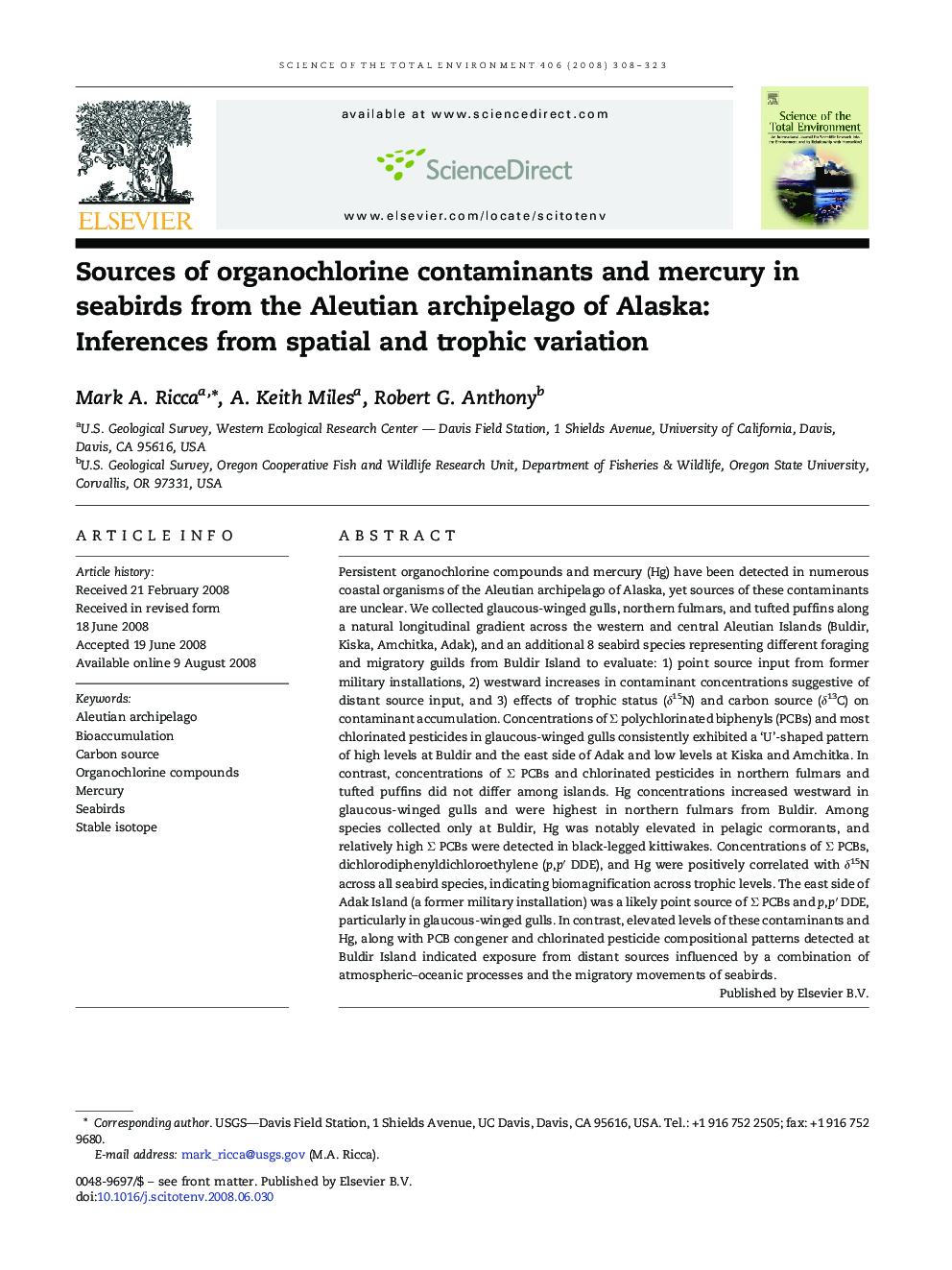| Article ID | Journal | Published Year | Pages | File Type |
|---|---|---|---|---|
| 4432592 | Science of The Total Environment | 2008 | 16 Pages |
Persistent organochlorine compounds and mercury (Hg) have been detected in numerous coastal organisms of the Aleutian archipelago of Alaska, yet sources of these contaminants are unclear. We collected glaucous-winged gulls, northern fulmars, and tufted puffins along a natural longitudinal gradient across the western and central Aleutian Islands (Buldir, Kiska, Amchitka, Adak), and an additional 8 seabird species representing different foraging and migratory guilds from Buldir Island to evaluate: 1) point source input from former military installations, 2) westward increases in contaminant concentrations suggestive of distant source input, and 3) effects of trophic status (δ15N) and carbon source (δ13C) on contaminant accumulation. Concentrations of Σ polychlorinated biphenyls (PCBs) and most chlorinated pesticides in glaucous-winged gulls consistently exhibited a ‘U’-shaped pattern of high levels at Buldir and the east side of Adak and low levels at Kiska and Amchitka. In contrast, concentrations of Σ PCBs and chlorinated pesticides in northern fulmars and tufted puffins did not differ among islands. Hg concentrations increased westward in glaucous-winged gulls and were highest in northern fulmars from Buldir. Among species collected only at Buldir, Hg was notably elevated in pelagic cormorants, and relatively high Σ PCBs were detected in black-legged kittiwakes. Concentrations of Σ PCBs, dichlorodiphenyldichloroethylene (p,p′ DDE), and Hg were positively correlated with δ15N across all seabird species, indicating biomagnification across trophic levels. The east side of Adak Island (a former military installation) was a likely point source of Σ PCBs and p,p′ DDE, particularly in glaucous-winged gulls. In contrast, elevated levels of these contaminants and Hg, along with PCB congener and chlorinated pesticide compositional patterns detected at Buldir Island indicated exposure from distant sources influenced by a combination of atmospheric–oceanic processes and the migratory movements of seabirds.
